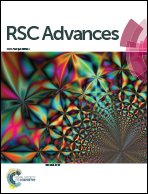New insights into reinforcement mechanism of nanoclay-filled isoprene rubber during uniaxial deformation by in situ synchrotron X-ray diffraction
Abstract
The strain-induced crystallization (SIC) behavior of unfilled and organically modified montmorillonite (OMMT)-filled cis-1,4-polyisoprene rubber (IR) were analyzed by using synchrotron wide-angle X-ray diffraction (WAXD). The inclusion of highly anisotropic nanoclay reinforces the rubber matrix by introducing a mass of physical crosslinking points (entanglements). An early promotion of SIC was observed in the nanocomposites during uniaxial stretching, as well as enhancement of overall crystallization. The reinforcement of IR and the enhancement of SIC both show strong OMMT concentration dependence and most manifest at a filler loading of 5 wt%, at which content the OMMT reaches a saturated dispersion. The adsorption of rubber chains on the surface of OMMT will form a ‘denser network domain’ due to the strong filler–rubber interaction. During the deformation, the crystallites emerge from the highly stretched short chains in the “denser network domain” and strengthen the whole network. The large effective specific surface and aspect ratios of OMMT play a vital role in interpreting the reinforcement of nanoclay-filled IR.


 Please wait while we load your content...
Please wait while we load your content...